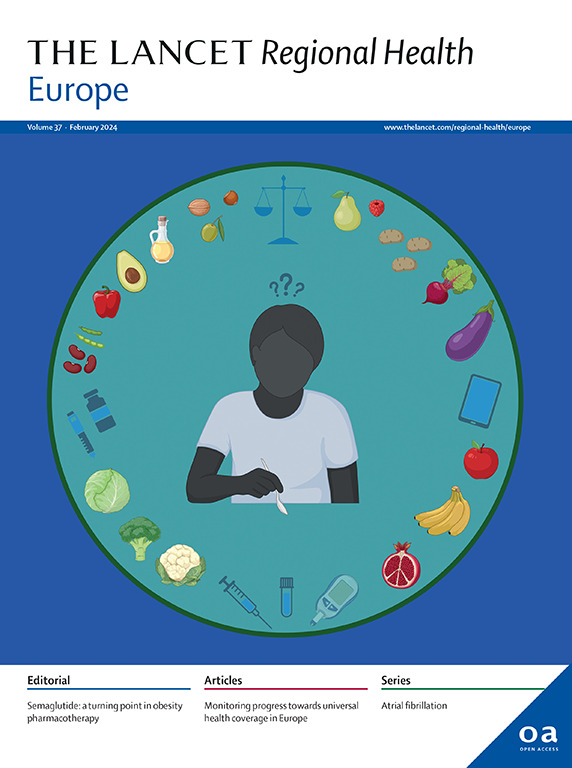Survival and quality of life after first-time diagnosis of brain metastases: a multicenter, prospective, observational study
IF 13.6
Q1 HEALTH CARE SCIENCES & SERVICES
引用次数: 0
Abstract
Background
A major concern in anticancer treatment (ACT) of brain metastases (BM) is exposing patients with short expected survival to treatments that negatively impact on quality of life (QoL). Such futile ACT at the end of life is time-consuming and burdensome for patients and their families and entails unnecessary healthcare costs. Refraining from ACT is challenging for both physicians and patients. This study aimed to provide real-life data on survival after BM diagnosis and patient reported outcomes (PROs) after ACT to identify risk factors for futile treatment and to support BM treatment decisions.
Methods
This multi-center, prospective, observational study recruited consecutive patients with first-time BM from November 2017 to March 2021. Patients were followed until death or study end (October 1st, 2023). Clinical factors associated with survival were analyzed by the Cox’ proportional hazards model. Changes in PROs after BM treatment were described according to Eastern Cooperative Oncology Group (ECOG) performance status, survival, and treatment groups.
Findings
For the total cohort (N = 912), median overall survival (mOS) after BM diagnosis was 5.9 months (95% confidence interval [CI] 5.2–6.7). ECOG 2–4, uncontrolled extracranial metastases, and ≥5 BM were associated with short survival. In patients treated with radiotherapy, survival for patients with ECOG 2 and those with ECOG 3–4 was similar and particularly short for the whole brain radiotherapy (WBRT) group (ECOG 2: 2.9 months [95% CI 2.3–3.5]; ECOG 3–4: 2.1 [1.5–2.7]). Patients surviving <6 months after BM diagnosis reported worse QoL scores two months after ACT; patients surviving >6 months reported stable scores over time.
Interpretation
Patients with ECOG 2–4, especially those with uncontrolled extracranial metastases and ≥5 BM, are at risk for futile ACT. BM treatment guidelines should strongly caution against ACT to patients with expected survival <6 months and specifically advise against WBRT.
Funding
The South-Eastern Norway Regional Health Authority; The Norwegian Cancer Society.
首次诊断脑转移后的生存和生活质量:一项多中心、前瞻性、观察性研究
背景:脑转移瘤(BM)的抗癌治疗(ACT)的一个主要问题是使预期生存期较短的患者接受对生活质量(QoL)产生负面影响的治疗。在生命结束时进行这种无效的ACT治疗,对患者及其家属来说既耗时又负担沉重,还会带来不必要的医疗费用。抑制ACT对医生和患者都具有挑战性。本研究旨在提供脑脊髓炎诊断后的真实生存数据和ACT后患者报告的结果(PROs),以确定无效治疗的危险因素,并支持脑脊髓炎治疗决策。方法:这项多中心、前瞻性、观察性研究从2017年11月至2021年3月招募了连续的首次BM患者。随访患者至死亡或研究结束(2023年10月1日)。采用Cox比例风险模型分析与生存相关的临床因素。根据东部肿瘤合作组(ECOG)的表现状态、生存期和治疗组描述BM治疗后PROs的变化。结果:对于整个队列(N = 912), BM诊断后的中位总生存期(mOS)为5.9个月(95%可信区间[CI] 5.2-6.7)。ECOG 2-4、未控制的颅外转移和≥5 BM与短生存期相关。在接受放疗的患者中,ECOG 2和ECOG 3-4患者的生存期相似,全脑放疗(WBRT)组的生存期特别短(ECOG 2: 2.9个月[95% CI 2.3-3.5];Ecog 3-4: 2.1[1.5-2.7])。存活6个月的患者报告了稳定的评分。解释:ECOG 2-4的患者,特别是那些未控制的颅外转移和≥5 BM的患者,存在无效ACT的风险。BM治疗指南应强烈警告对预期生存的患者使用ACT。挪威癌症协会。
本文章由计算机程序翻译,如有差异,请以英文原文为准。
求助全文
约1分钟内获得全文
求助全文
来源期刊

Lancet Regional Health-Europe
Multiple-
CiteScore
19.90
自引率
1.40%
发文量
260
审稿时长
9 weeks
期刊介绍:
The Lancet Regional Health – Europe, a gold open access journal, is part of The Lancet's global effort to promote healthcare quality and accessibility worldwide. It focuses on advancing clinical practice and health policy in the European region to enhance health outcomes. The journal publishes high-quality original research advocating changes in clinical practice and health policy. It also includes reviews, commentaries, and opinion pieces on regional health topics, such as infection and disease prevention, healthy aging, and reducing health disparities.
 求助内容:
求助内容: 应助结果提醒方式:
应助结果提醒方式:


